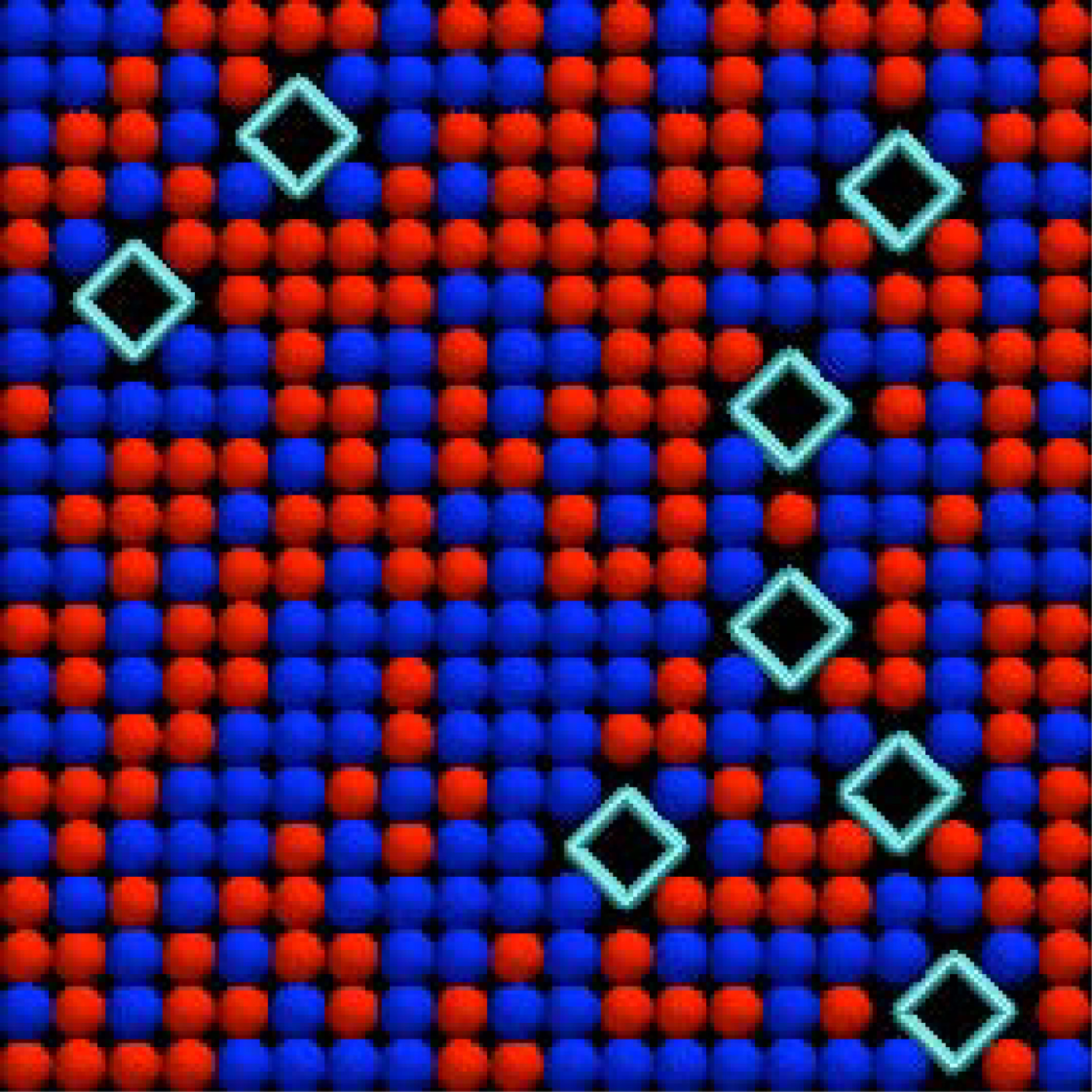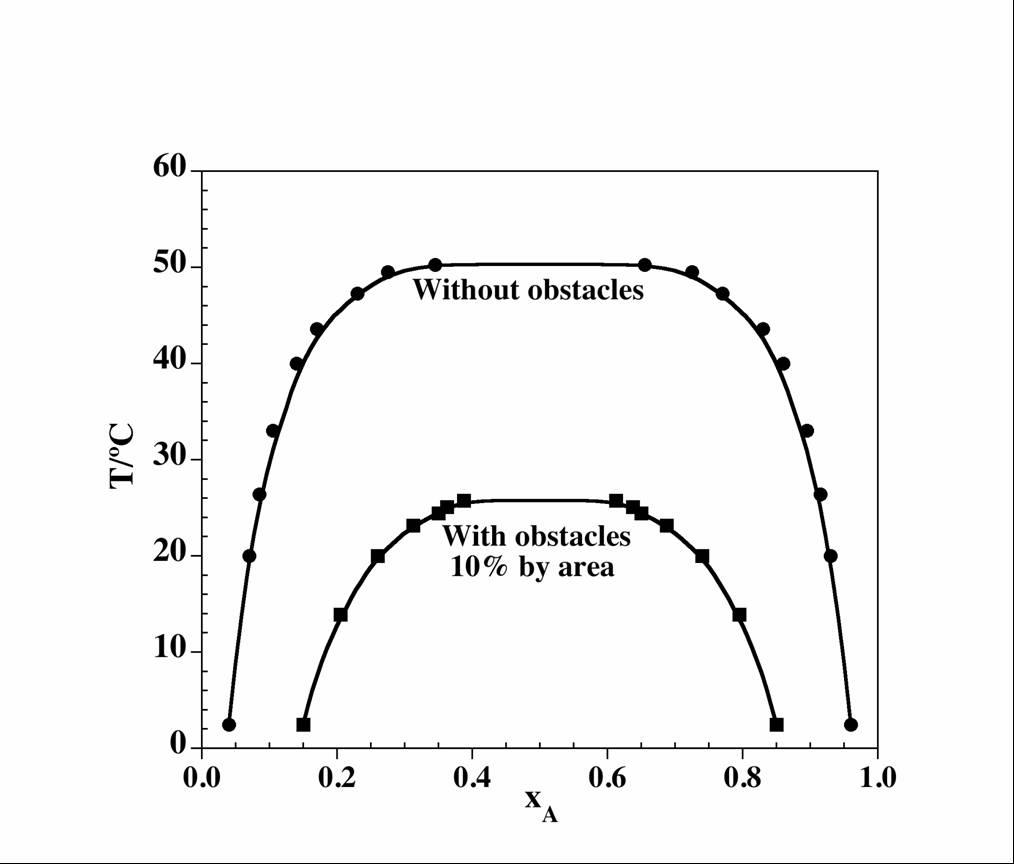
ACS PRF | ACS
All e-Annual Reports

42834-AC4
Effects of PIP-2 on Protein-Lipid Bilayer Domain Formation
The existence of lipid rafts in live cells remains a topic of lively debate. While large, micron-sized rafts are readily observed in artificial membranes, attempts to observe analogous domains in live cells place an upper limit of ~5 nm on their size. We suggest that integral membrane proteins attached to the cytoskeleton act as obstacles that limit the size of lipid domains.
In this work we suggest a simple but powerful effect that might prevent formation of mm-sized rafts in live cells. We consider a lattice model (Fig. 1) with two lipid components A and B that tend to phase separate due to favorable A–A and B–B energetic interactions, and calculate the phase diagram as a function of the area fraction of protein obstacles. We find that inert, immobile obstacles, intended to model integral membrane proteins bound to the underlying cytoskeleton, suppress the temperature at which phase separation occurs by a significant amount (Fig. 2). The presence of protein obstacles at only 5-10% by area dramatically reduces the tendency of the lipids to phase separate. The obstacles do not hinder the formation of smaller nm-sized lipid domains. These effects of protein obstacles are robust and must be accounted for in any comprehensive physical model of lipid domain formation in biological membranes. These calculations emphasize the importance of spatial heterogeneity in cell membranes, which may limit the transferability of conclusions drawn from artificial membranes to live cells.
These predictions could be tested experimentally in vitro by preparing artificial membranes composed of raft-forming lipid mixtures on surfaces that contain nanometer-scale obstacles. Preliminary results with obstacles of different shapes and sizes show a suppression of the critical temperature similar to what is seen in this work, and the degree of suppression is almost identical for mobile and immobile obstacles.
We plan to extend the model to include two coupled leaflets. The goal is to understand what degree of coupling is necessary to transmit information about the existence of rafts in one leaflet to the other.
SHAPE \* MERGEFORMAT
|

SHAPE \* MERGEFORMAT
Figure 2. Coexistence curve of the lipid mixture for 50 x 50 lattice. |
